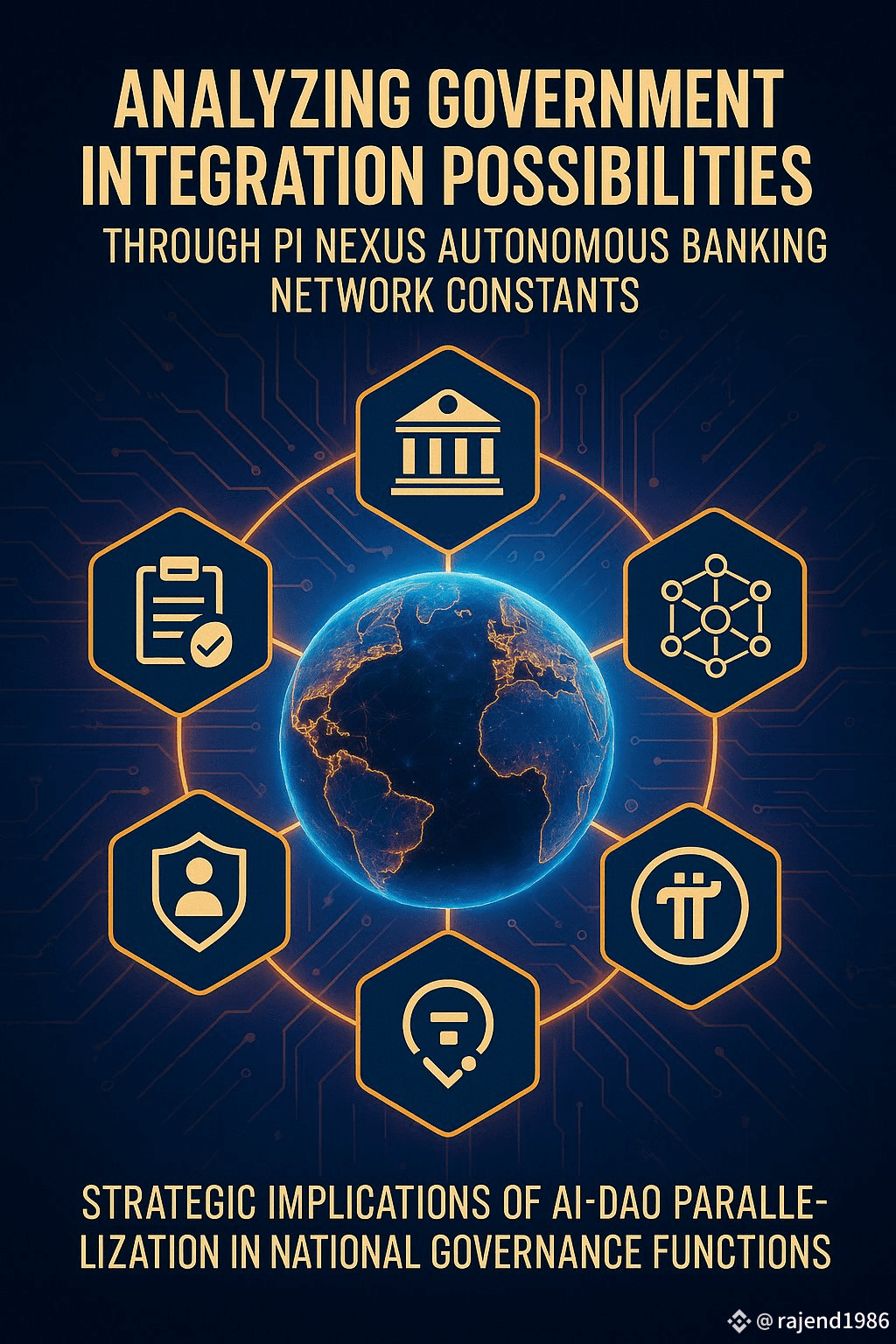Analyzing Government Integration Possibilities Through Pi Nexus Autonomous Banking Network Constants
From Ministries to Modules: The Decentralization of State Functions via Pi Network
Toward a Borderless Administrative Infrastructure Powered by Pi
Replacing Bureaucracy with Algorithms: Pi as the Next Public Utility Layer
The End of Centralized Governance? A Pi-Powered Reimagination of State Systems
[ This article includes predictive analysis and may differ from actual outcomes. ]

1. **Introduction: Pi as Infrastructure, Not Just Currency**
The Pi Nexus Autonomous Banking Network constants reveal a design that transcends traditional digital assets. They lay the groundwork for full integration between **national government systems**—such as taxation, compliance, digital identity, and monetary systems—and the **Pi Network ecosystem**. This suggests a global architecture capable of **offloading significant administrative and fiscal responsibilities to a decentralized, AI-governed DAO infrastructure**.
2. **Tax & Accounting Integration: Real-Time, Automated Taxation**
The activation of constants like `PI_COIN_INTEGRATED_TAX_COMPLIANCE` and `PI_COIN_COMPLIANCE_PROTOCOLS` indicates a future where:
* Taxation is **automatically executed at the wallet-level**,
* Distributed in real-time to national authorities,
* Without requiring user-initiated tax filings.
This implies a fundamental shift toward **machine-driven fiscal compliance**, significantly reducing the need for human tax intermediaries or government enforcement systems.
3. **Replacing Government Financial Infrastructure**
Constants such as `FIAT_ON_RAMP`, `EXCHANGE_CONNECTIVITY`, and `PARTNERSHIP_WITH_FINANCIAL_INSTITUTIONS` hint at:
* **Pi as an operational layer** capable of supporting or replacing core functions of central banks and commercial banks,
* Including payment settlements, FX exchange, lending, and treasury disbursements.
For governments, this means **radical cost reduction, real-time transparency, and anti-corruption guarantees**.
4. **Digital Identity and e-Governance Integration**
With the activation of `DECENTRALIZED_IDENTITY`, `2FA`, `QUANTUM-RESISTANT ID`, and `KYC/AML`, Pi is technically prepared to:
* Function as a **parallel national ID system**,
* Enable services like voting, passport issuance, subsidies, and healthcare access,
* Eventually **replace centralized e-government platforms** with a decentralized, privacy-preserving alternative.
5. **AI-DAO Based Policy Execution**
Pi's DAO model—featuring `LIQUID DEMOCRACY`, `QUADRATIC VOTING`, and `AI-Driven Decision-Making`—presents a system where:
* Local governments or cities could **run budget allocations or policy proposals via community DAO voting**,
* With **AI implementing the community's will autonomously**.
This introduces a new governmental paradigm: **"administration as a decentralized service."**
6. **Monetary Policy Without Monopoly**
Despite being a stablecoin, Pi uses a **multi-collateral, AI-stabilized mechanism**, avoiding direct conflict with national fiat currencies.
Instead, countries could adopt Pi:
* As a **complementary public currency**,
* For domestic public payments, cross-border trade, or welfare disbursement.
This allows for a **shared currency governance model**, historically unprecedented.
Conclusion:
Government-DAO Symbiosis in the New World Order**
These constants are not just parameters—they are a **blueprint for peaceful integration** between sovereign states and autonomous digital communities.
The Pi Network offers **governments a partner, not a rival**, capable of delivering transparent, efficient, and citizen-centric services.
In this model, **states retain sovereignty**, but delegate infrastructure to a **globally trusted, AI-powered, decentralized ecosystem.**